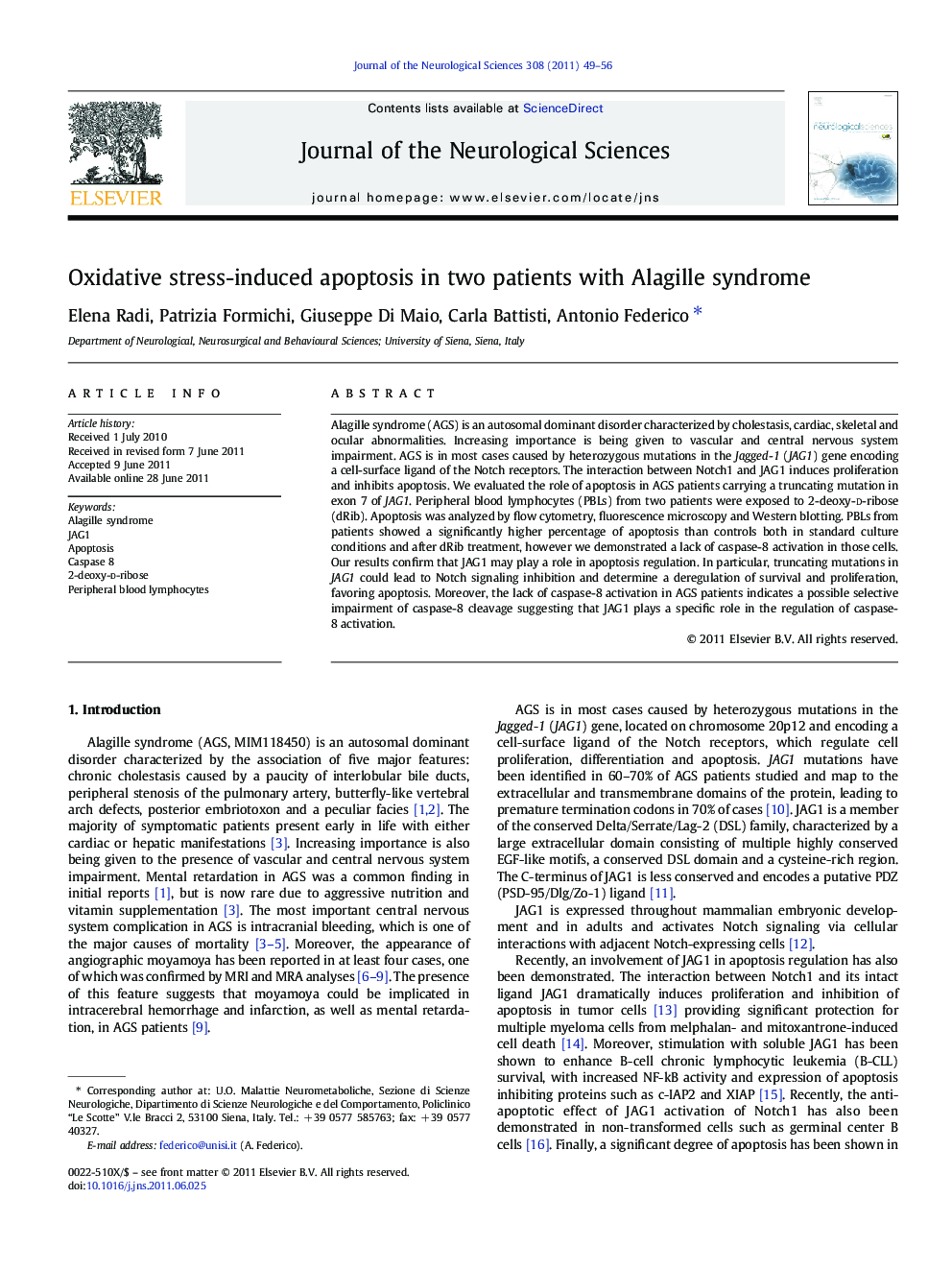| Article ID | Journal | Published Year | Pages | File Type |
|---|---|---|---|---|
| 8282461 | Journal of the Neurological Sciences | 2011 | 8 Pages |
Abstract
Alagille syndrome (AGS) is an autosomal dominant disorder characterized by cholestasis, cardiac, skeletal and ocular abnormalities. Increasing importance is being given to vascular and central nervous system impairment. AGS is in most cases caused by heterozygous mutations in the Jagged-1 (JAG1) gene encoding a cell-surface ligand of the Notch receptors. The interaction between Notch1 and JAG1 induces proliferation and inhibits apoptosis. We evaluated the role of apoptosis in AGS patients carrying a truncating mutation in exon 7 of JAG1. Peripheral blood lymphocytes (PBLs) from two patients were exposed to 2-deoxy-d-ribose (dRib). Apoptosis was analyzed by flow cytometry, fluorescence microscopy and Western blotting. PBLs from patients showed a significantly higher percentage of apoptosis than controls both in standard culture conditions and after dRib treatment, however we demonstrated a lack of caspase-8 activation in those cells. Our results confirm that JAG1 may play a role in apoptosis regulation. In particular, truncating mutations in JAG1 could lead to Notch signaling inhibition and determine a deregulation of survival and proliferation, favoring apoptosis. Moreover, the lack of caspase-8 activation in AGS patients indicates a possible selective impairment of caspase-8 cleavage suggesting that JAG1 plays a specific role in the regulation of caspase-8 activation.
Related Topics
Life Sciences
Biochemistry, Genetics and Molecular Biology
Ageing
Authors
Elena Radi, Patrizia Formichi, Giuseppe Di Maio, Carla Battisti, Antonio Federico,
